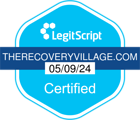Abstralis a sublingual version of the opioid pain reliever fentanyl. Abstral is indicated for the treatment of breakthrough pain in cancer patients. It is typically administered along with a longer-acting opioid that provides the foundation for pain management.
Abstral is contraindicated for treatment in non-opioid tolerant patients and those who have a history of gastrointestinal obstruction. Abstral has arapid onset, reaching peak effects within 30 minutes after being dissolved under the tongue.
The current North American opioidoverdoseepidemic is largely fueled by illicit fentanyl distribution. All varieties of fentanyl are considered highly addictive and are classified as Schedule II substances by the Federal Drug Administration (FDA). Abstral and other forms of fentanyl are commonly mixed with central nervous depressants before being sold on the black market for recreational use.
Abstral and other forms of fentanyl are 80 to 100 times stronger than morphine. Withdrawals from physical dependence on Abstral can be severe. High, frequent doses correlate to worse withdrawals symptoms when the drug treatment is halted. Due to the potential severity of Abstral withdrawals, medical detox is advised.
Treatment Can Be Life Changing. Reach out today.
Whether you are struggling with addiction, mental health or both, our expert team is here to guide you every step of the way. Don’t wait— reach out today to take the first step toward taking control of your life.
What Are Common Abstral Withdrawal Symptoms?
Common Abstral withdrawal symptoms include muscle aches, difficulty sleeping, anxiety, excessive perspiration, high blood pressure, nausea, vomiting, goosebumps, and depression. Additional symptoms include watery eyes, agitation, excessive yawning, runny nose, rapid heart rate, fever, diarrhea, and stomach cramps. Drug cravings are usually the worst during the first week of withdrawals.
Abstral Withdrawal Timeline and Symptom Durations
Post-acute withdrawals for short-acting opioids such as Abstral begin 6 to 12 hours after the last dose. This period is characterized by fever, rapid heart rate, runny nose, excessive yawning, agitation, watery eyes, hypertension, excessive sweating, anxiety, trouble sleeping, and muscle aches.
Drug cravings become severe after 72 hours and persist for about a week. During this time, the patient will likely experience a collection of flu-like symptoms, including diarrhea, stomach cramps, chills, nausea, and vomiting. Depression is also common.
Managing Withdrawal Symptoms of Abstral
Abstral therapy can be discontinued immediately by patients who are already taking potent, long-acting opioids. For patients who have been regularly taking high doses of Abstral, the prescribing physician may opt to reduce the dose in conjunction with diminishing pain. Because Abstral is taken concomitantly with other longer-acting opioids, the spontaneous onset of post-acute opioid withdrawal is rare. Recreational users, however, are advised to reduce overall opioid doses gradually to avoid a shock to the system. During this time of titration and discontinuation, patients are advised to stay physically active. Chronic opioid dosage is known to unbalance the hormone levels in the body. Exercise can help to return hormone levels to normal.






